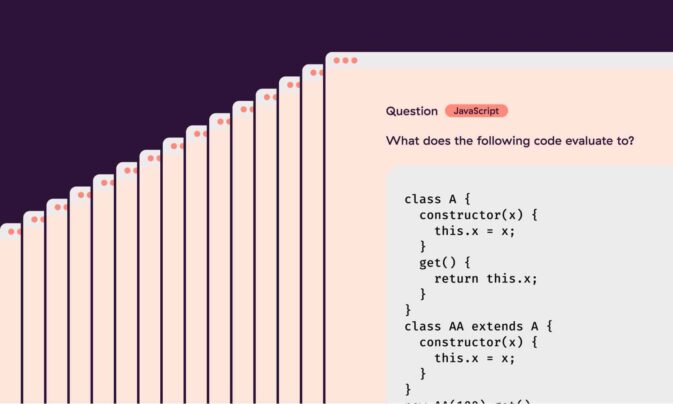Great people are the lifeblood of any business, that’s why it hurts so much when they decide to leave. To put that pain into numbers, data shows that it costs anywhere from 33% to 200% of an employee’s salary to replace them – ouch!
In this article, we will arm you with all the information you need to calculate employee turnover rate. After we’ve looked at what they are and how to calculate them in your business, we’ll run through 3 top tips to help you keep your best staff for longer.
Let’s get into it!
Quick Links:
- What is Employee Turnover Rate?
- How Do You Compare? Employee Turnover Rates by Industry/Job Role
- How to Calculate Employee Turnover Rate
- What Does Your Employee Turnover Rate Mean?
- How to Avoid Employee Turnover – 3 Top Tips
What is Employee Turnover Rate?
Employee turnover, and the associated employee turnover rate, measures the number of employees who leave an organization in a given time period. Most often calculated over an annual period, employee turnover rate is used as a key metric when understanding what employees think of an employer.
While many companies look at employee turnover holistically, it’s common to drill down and compare employee turnover rates between individual departments and teams.
Naturally, every company wants to achieve the lowest employee turnover rate possible. Employees leaving isn’t just bad for business, it’s also unsettling for those around them, and it means crucial knowledge, skills, and experience is lost.
How Do You Compare? Employee Turnover Rates by Industry
Before you start comparing your employee turnover rate to businesses around you, it’s vital to understand that not everyone’s born equal. When it comes to turnover rate, there’s a huge difference in the norm depending on the industry.
This is especially true in the past two years, with the effects of the COVID-19 pandemic being felt far more heavily in industries such as leisure, hospitality, and arts than government and finance.
Some fantastic data from the team at Zappia shows average US employee turnover rates across several industries between 2016 and 2022 – how does your industry shape up?
| Industry | 2016 | 2017 | 2018 | 2019 | 2020 |
|---|---|---|---|---|---|
| Construction | 58% | 61% | 57% | 65% | 68% |
| Manufacturing | 27% | 30% | 32% | 31% | 44% |
| Durable goods | 25% | 27% | 28% | 28% | 41% |
| Retail trade | 54% | 53% | 58% | 58% | 69% |
| Transportation, warehousing, and utilities | 40% | 40% | 44% | 45% | 59% |
| Information | 33% | 35% | 37% | 38% | 44% |
| Finance and insurance | 23% | 25% | 24% | 24% | 25% |
| Real estate and rental and leasing | 35% | 37% | 35% | 39% | 49% |
| Professional and business services | 64% | 63% | 63% | 63% | 69% |
| Education and health services | 31% | 32% | 34% | 33% | 44% |
| Leisure and hospitality | 75% | 74% | 77% | 79% | 130% |
| Arts, entertainment, and recreation | 81% | 84% | 88% | 79% | 129% |
| Government | 18% | 18% | 18% | 18% | 24% |
How to Calculate Employee Turnover Rate
So, how do you calculate employee turnover rate? The good news is that one easy-to-use formula is all you need to get insight into your annual turnover rate.
Here are the numbers you’ll need to get started:
- The number of employees who have left your business in the last 12 months
- The total number of employees you employed at the start of the year
- The total number of employees you employed at the end of the year
With that data to hand, you can plug it into the formula below.
Here’s an example.
If you’ve started the year with 100 people, ended it with 90, and saw 20 people leave your business in that time, your turnover rate will look like this:
It’s essential to include your start and end of year employee numbers to take into account any company growth or shrinkage! If you are growing fast, check out our Hiring at Scale article to ensure your recruitment team stays ahead of the curve.
What Does Your Employee Turnover Rate Mean? The Difficult Questions to Ask
So, you’ve got an employee turnover rate number, and you’ve compared how you fit with other industries, but what does it all actually mean?
Not all employee turnover is bad, and in fact, in certain circumstances, it can actually be a good thing. If you’re looking at your employee turnover rate with a bit of concern, take the time to step back, and ask yourself these questions.
Who has left the organization?
We’re not asking you to name and shame Barry or Jessica here, we’re asking you to think more broadly about who’s left your business. Are they individuals from a certain department? Are they senior or junior? Were the individuals top performers?
If critical, highly skilled individuals leave, you might have a problem. But if low-skilled, disengaged team members are moving on, you may actually receive supplementary benefits.
When did they leave?
When you look across the year, are there particular spike points in your turnover? If so, this may point to a factor out of your control, with an industry event, seasonal changes, or shift in legislation causing the broader economic landscape to change.
But if they’re consistent and evenly spread throughout the year, there may be other problems to investigate.
Why did they leave?
But perhaps the biggest question to ask yourself is why they left? Exit interviews are key to understanding why staff decided to pursue other opportunities away from your company.
If it’s pay/package related, you might have a quick fix on your hands. But, more substantial issues, such as company culture, may require long-term investment.

How to Avoid Employee Turnover – 3 Top Tips
Of course, the ideal situation is to have a super-low employee turnover in the first place. Employees usually leave for three reasons: either the package isn’t good enough, they don’t like the working environment, or they’re simply not the right person for the job.
Here are three tips to help you counter each one and prevent avoidable turnover.
P.S – It’s not all doom and gloom by the way – sometimes employees leave because they simply want a new challenge, so don’t be shocked if you implement all our tips and people still decide to look elsewhere! 😀
#1 – Remain Competitive 🎁
First, make sure that when you look into the market, you’re competitive in what you’re offering your people. This doesn’t just mean paying them more, you need to look holistically at your remuneration package.
Especially in a post-pandemic world, employees want more than just money in their bank. Companies that offer flexible working by default, robust healthcare packages, and defined routes for professional development often attract the best talent in the market.
To avoid employee turnover, take the time to assess yourself against your competitors and make sure you’re offering employees the best all-around deal.
#2 – Instill a People-First Culture 🙏🏻
If your staff are going to be working for you for 8+ hours a day, they need to be enjoying themselves. The responsibility for that sits firmly with you as an employer, as it’s your job to create a culture that your staff enjoy working in.
Emphasize team building, professional development, and social interactivity to ensure your workplace is a joy to work in. If your people love coming to work, they’re far more likely to have strong employer loyalty, be more engaged, and be less inclined to even consider a role elsewhere.
#3 – Hire Right in The First Place ✅
And lastly, the root cause of a lot of employee turnover actually comes from the initial hire. 31% of employees quit their job within the first six months, with a lot of that coming down to them being a bad hire in the first place.
How do you fix that? You pick better, more qualified candidates by skills testing them – duh!
At Toggl Hire, we’re big fans of skills testing and believe the best way to hire rockstar talent is to screen candidates the modern way. With our library of 11,000 expert-created questions, cheat-proof testing, and automatic pass thresholds, skills testing not only delivers better candidates, but it saves you bundles of time too.
Want to see how it works? Check out this 1-minute video.
Summary
Employee turnover is costly, kills culture, and erodes customer consistency, so you want to avoid it at all costs. With our simple employee turnover rate formula, you can quickly calculate employee turnover and see how you compare with others in your industry.
But, if you want to keep employees for longer, you may need to fix up a few things. Remember that the trick is to remain competitive in your market and focus your energy on creating a fantastic culture. But don’t forget it all starts with making the right hires, so take advantage of pre-employment tools to help you make the best recruitment decisions.
James Elliott is a Strategy Manager and Writer from London, UK. When not working on the day job, James writes on a variety of business and project management topics with a focus on content that enables readers to take action and improve their ways of working. You can check out James’ work on his website or by connecting on LinkedIn.



